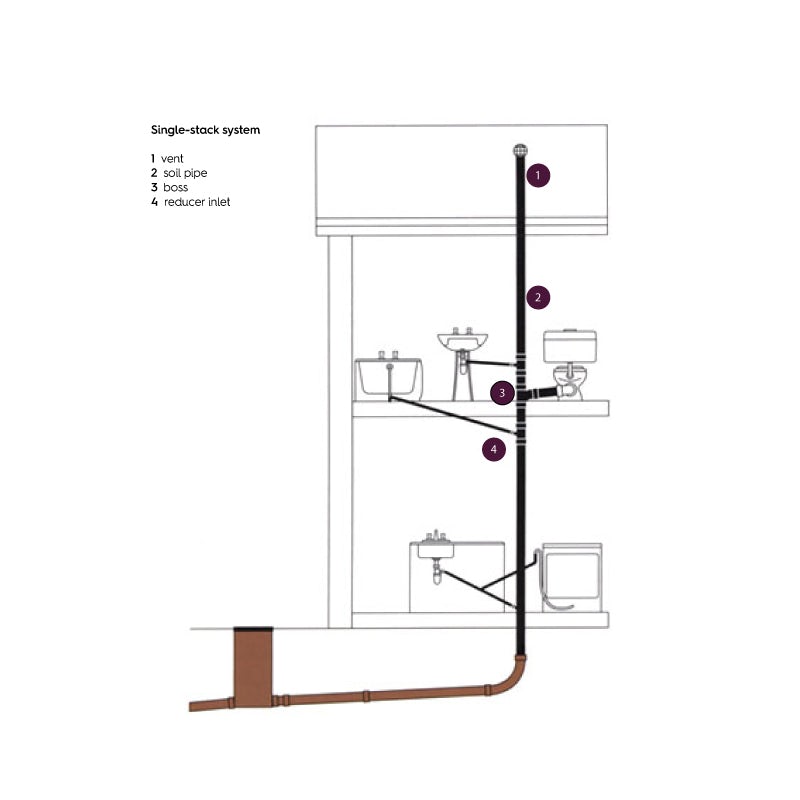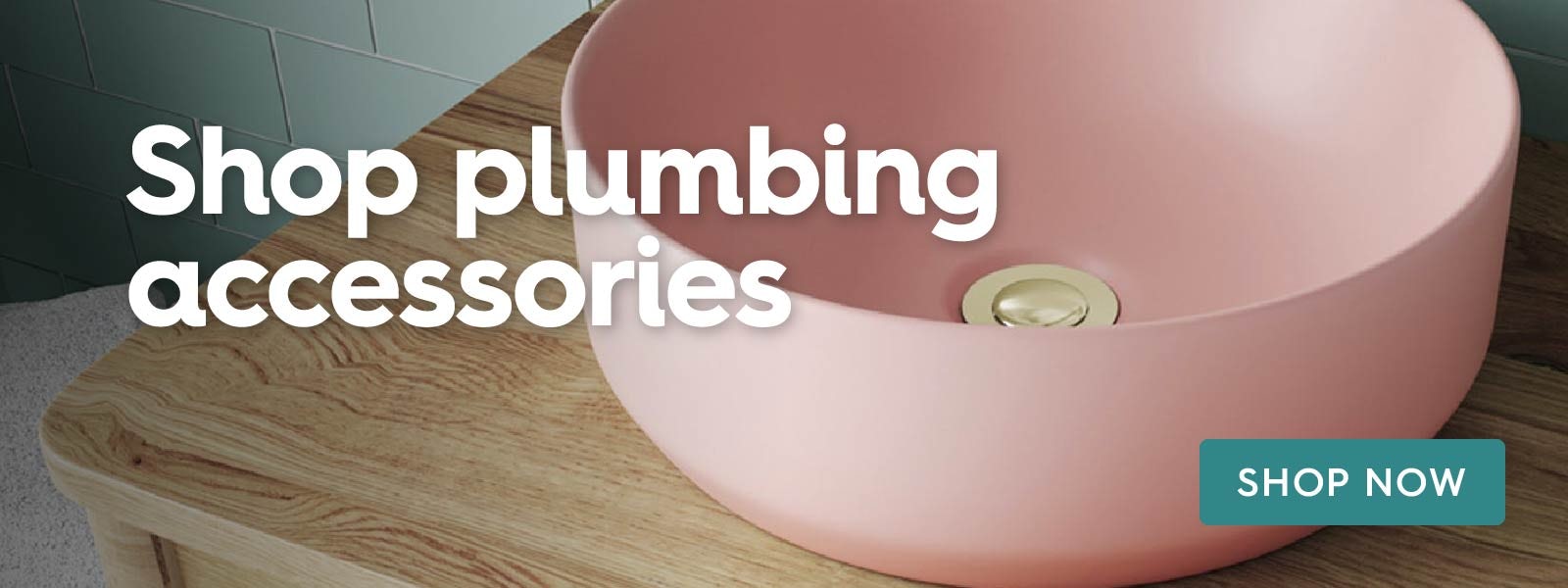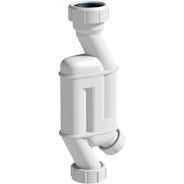If your bathroom sink isn't draining as it should, and you don't have the first clue about plumbing, it may be well worth reading this guide before calling out the plumber.
Have you ever come across a plumbing issue in your bathroom? And called a plumber out, only to find it was a problem you could've solved yourself? It's an all-too-common scenario and it's all down to know-how. Unless you're a trained and experienced Trade professional, many of us don't know what makes our plumbing fixtures work. And, when something goes wrong, we often don't have the first clue what to do or how to approach it.
If this is you, there's no need to fret. With this guide, we'll teach you the essentials and basics of plumbing, so the next time you face any problem with your bathroom and sink, you will, at the very least, be able to diagnose the issue.
To understand plumbing, the most important thing you must appreciate is the movement of water. Once you understand how the water in a plumbing system flows, it's easier to recognise where a problem may arise.
How a bathroom sink works
The water that comes out from your tap originates from the main water supply that runs through pipes in your home. The water that comes out from your tap visibly flows into the sink and goes down the drain which leads to the sink trap. This sink trap leads to the wastewater pipe (usually in the wall or floor) that then carries the water away.
There are several mechanisms, working in synchronisation, that ensure the water goes to where it needs to travel and stops when it needs to be stored. These mechanisms also work to provide a steady water supply and to prevent it from draining in the wrong place (i.e. anywhere other than the waste pipe!).
How it all comes together
So what exactly are these mechanisms? In the following section, we'll focus on the various parts of your sink and plumbing system to get a better idea of how everything comes together and works in unison. With this knowledge, you can then learn what you need to do when one mechanism fails to function properly.
Here are the parts of your plumbing system:
1. Water inlets
As the name suggests, this part allows water into your bathroom from the main water supply or the external supply of water. The first components connected to your bathroom sinks are one or two shut-off valves. These valves are positioned in close proximity to the sink and are connected to water supply tubes that flow toward the sink.
These valves are essential as they ensure that the water that flows into the bathroom can be shut off locally, just in case you discover a leak or any other potential damage. Water from the valves flows towards the tap tails (water supply tubes) and then through your taps. The taps are, essentially, another form of stop-valve since water can be held and released when you turn on the tap.
2. Taps
We have already mentioned taps, and they are familiar to most people. But what exactly are they? Taps act as the main, visible valve that prevents water from simply flowing freely down the drain. Modern taps have tightly-fitting washers (in our case, all our taps come with hardwearing ceramic discs) that seal and cartridges that control the movement through the tap.
Using simple physics, when you turn the handle of your tap, the pressure is applied to the washer, opening the valve which then allows the water to move out and into the sink. Providing you have your waste and plug open, these mechanisms combine to create a working bathroom sink and bathroom sink drain.
3. Cold water
The cold water that you get from your tap comes from outside your home, from the external water supply. The water from the main supply arrives, at pressure, in your bathroom through the shut-off valve into the cold water supply tube. When the tap is opened (or turned on), the water will flow into your sink or basin where it may be stopped by a drain trap or a plug. Your sink basin usually will contain all these mechanisms like the aforementioned plug (sometimes referred to as a drain stopper or even a sink stopper). A strainer is more common in kitchens, to help prevent food debris and leftovers from flowing down the drain pipe and clogging up the sink drain. You may use one in your bathroom sink, although this is far less common. This will only temporarily hold water in your sink.
Finally, once the plug is removed, this releases the cold water that will flow away through the waste, into the trap and on into your waste pipe.
You can find out more about water pressure in our in-depth guide.
4. Hot water
If you understand how the cold water system works then understanding the hot water system should be a breeze. Hot water is delivered to your bathroom (and all other hot taps and outlets in your home) thanks to your water heating system. There are 3 main types of water heating system in the UK, which we go into more detail about in our guide to shower pumps. Once heated, it flows towards your sink through the hot water supply pipe in a very similar way to the cold water system.
5. Water outlets
Whatever flows from the taps or above the sink goes directly to the drain at the bottom of the sink. A pipe that is shaped like a "U" traps a small percentage of water in the pipe, preventing any smells and unwanted water from travelling into your home.
After the sink trap, there is a trap arm which is a straight-shaped pipe that guides the water to flow toward the main wastewater line in the wall or floor of the bathroom.
The main wastewater line then guides the water away toward the central wastewater management system so that it can be treated.

Diagram showing how water drainage occurs in a typical home
Components of plumbing
To start here is a simple list of the main components present in the plumbing system: water taps, drain outlets, drainpipes, shut-off valves, hot and cold water pipes, sink trap, trap arm, and various washers, nuts, screws, clips and rods.
These are simply the more common components that you can find in most countries but just take note that some bathrooms may be different. While there are simple fixes for any components that might get damaged, if you feel that there might be an even worse problem taking place immediately turn off the main water supply to prevent any potential damage from occurring. This means you can then have a closer look at the problem at hand.
Once you have diagnosed the issue and realise that there are some parts that need to be replaced, check out our range of plumbing accessories for replacement parts. Compare and contrast with the existing component you need replacing, to make sure you are purchasing the correct replacement.
Conclusion
In a nutshell, knowing the general flow and movement of water in a typical bathroom system will help greatly in diagnosing any potential problems you might face with your sink. This is great knowledge to have and can come in very handy when issues occur.







